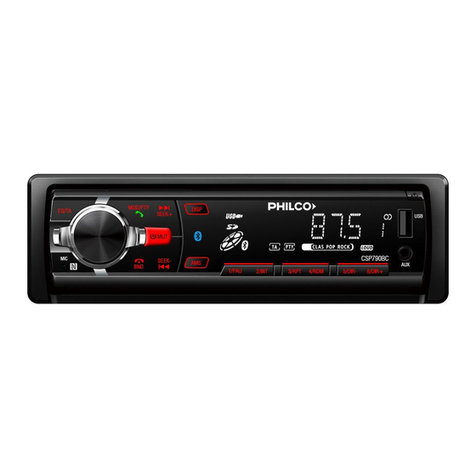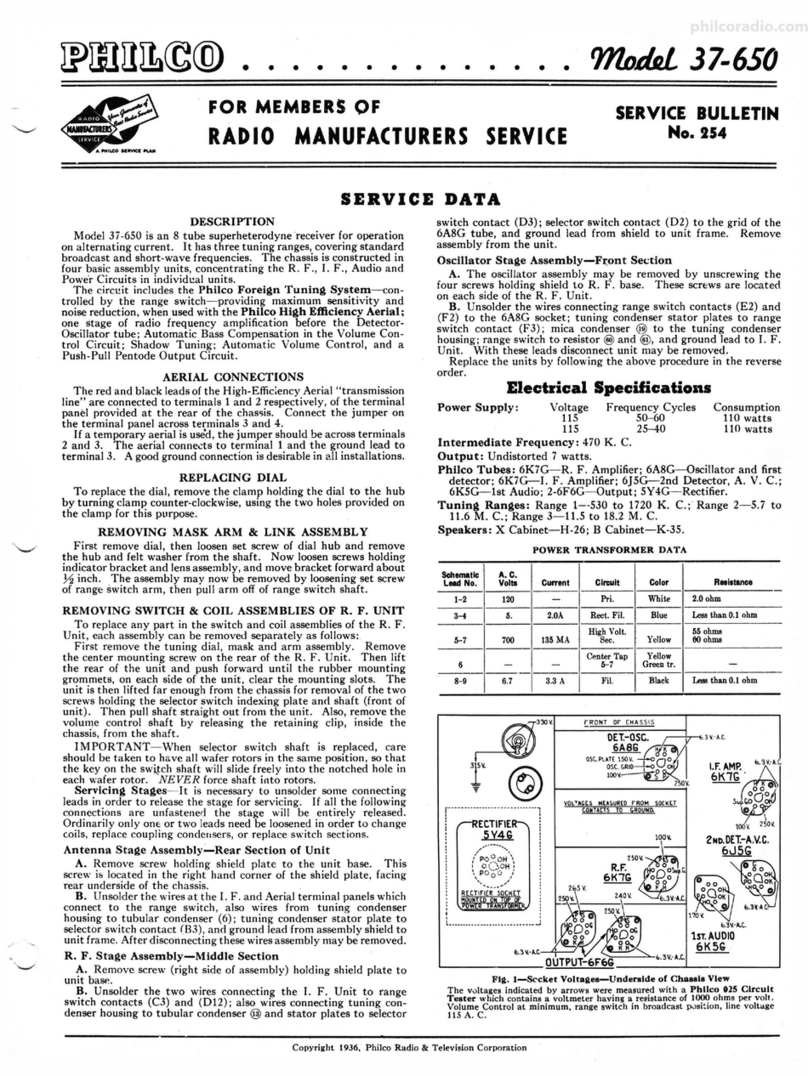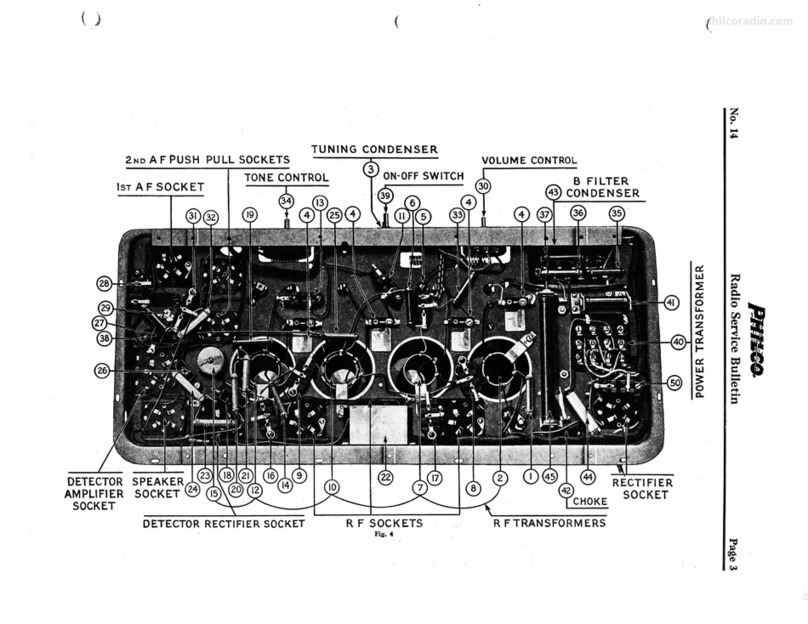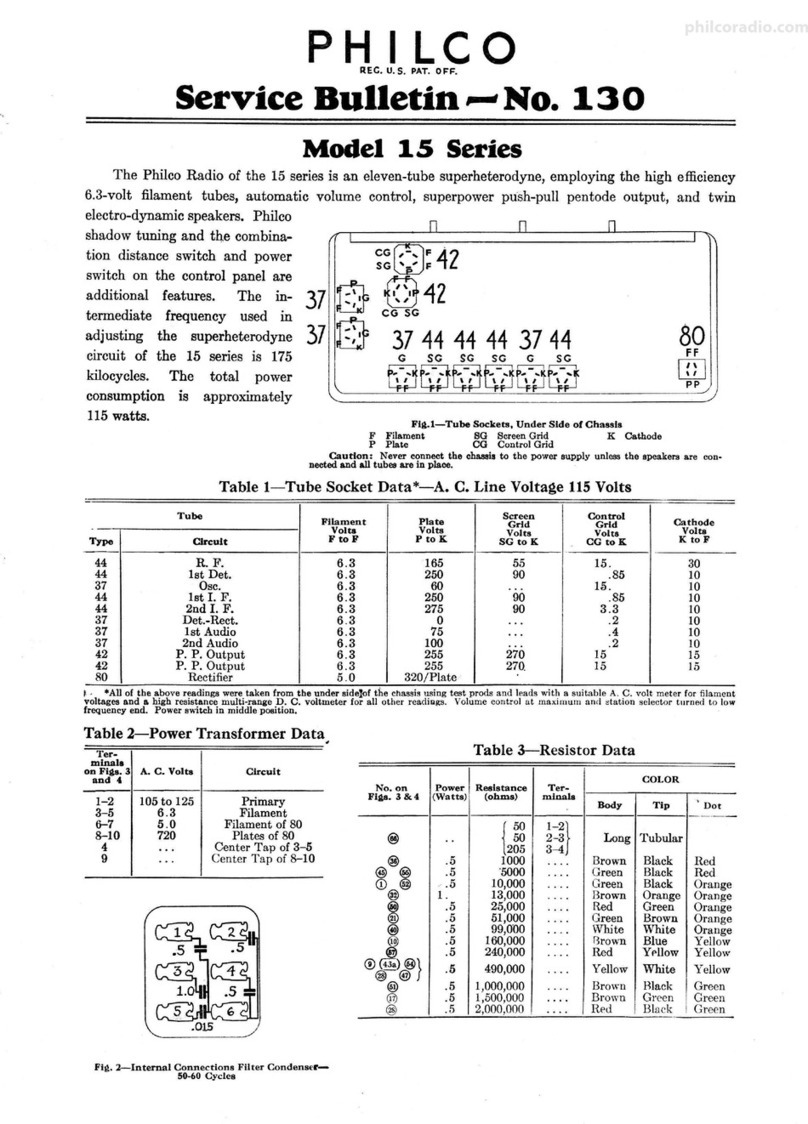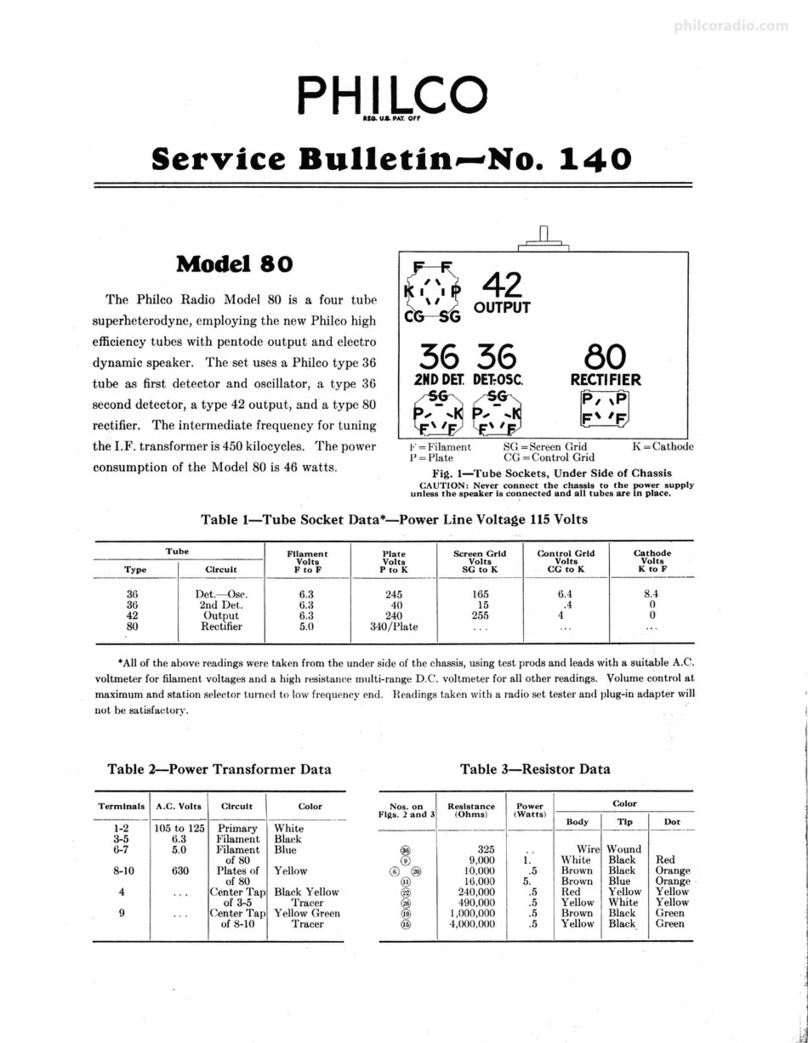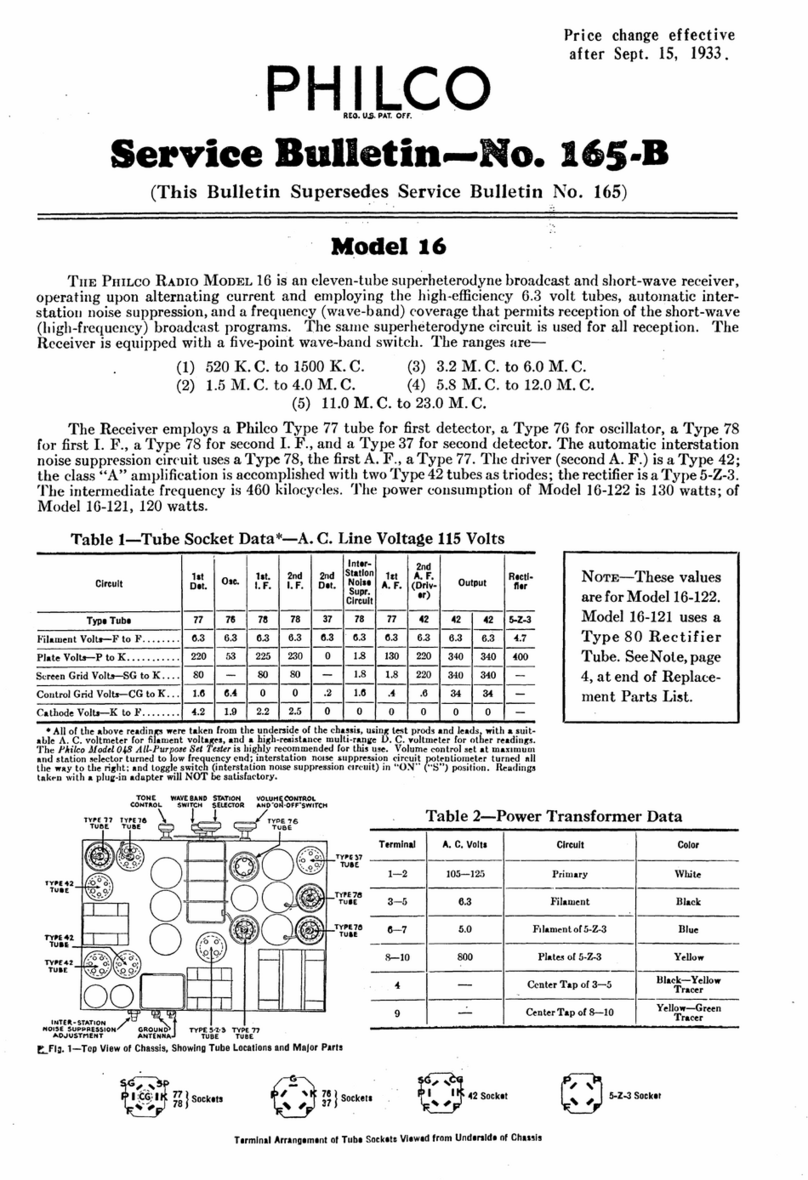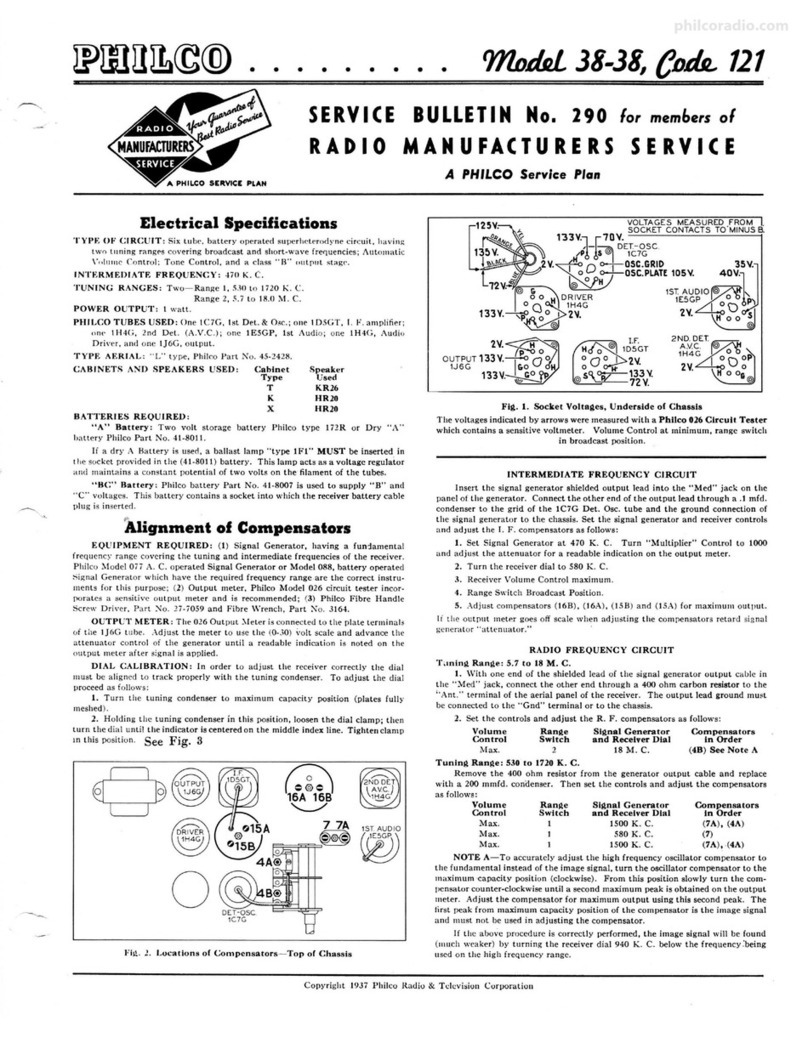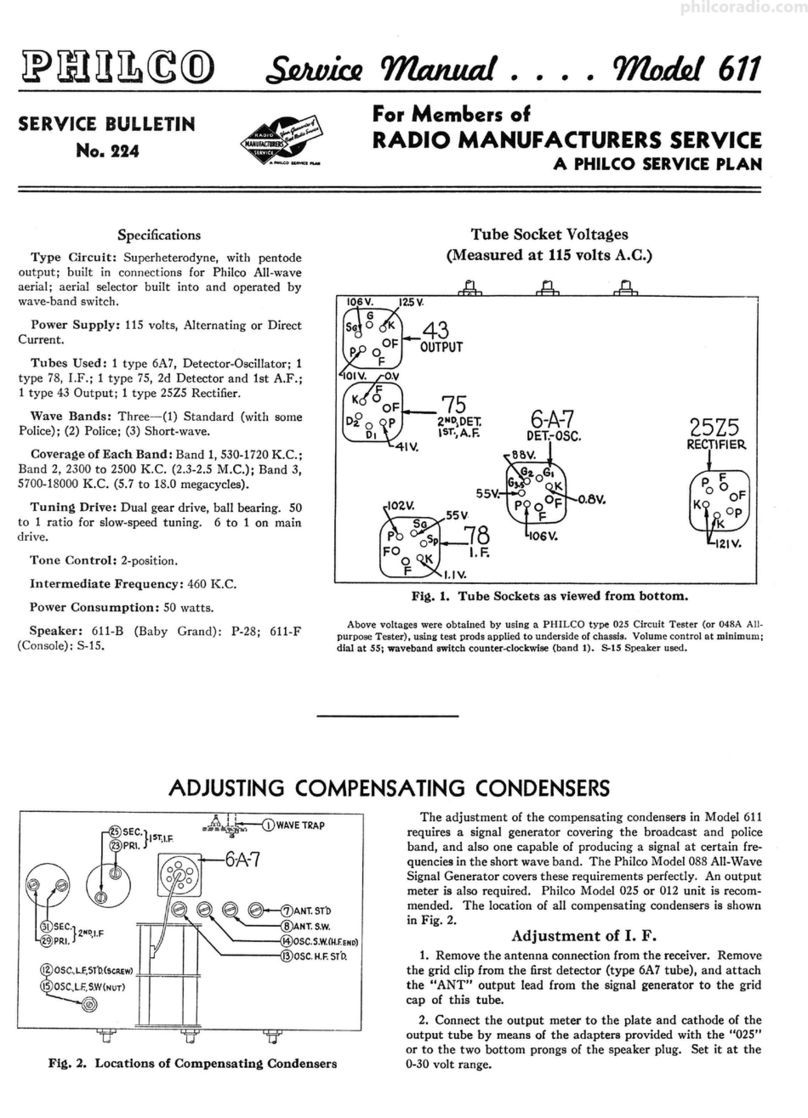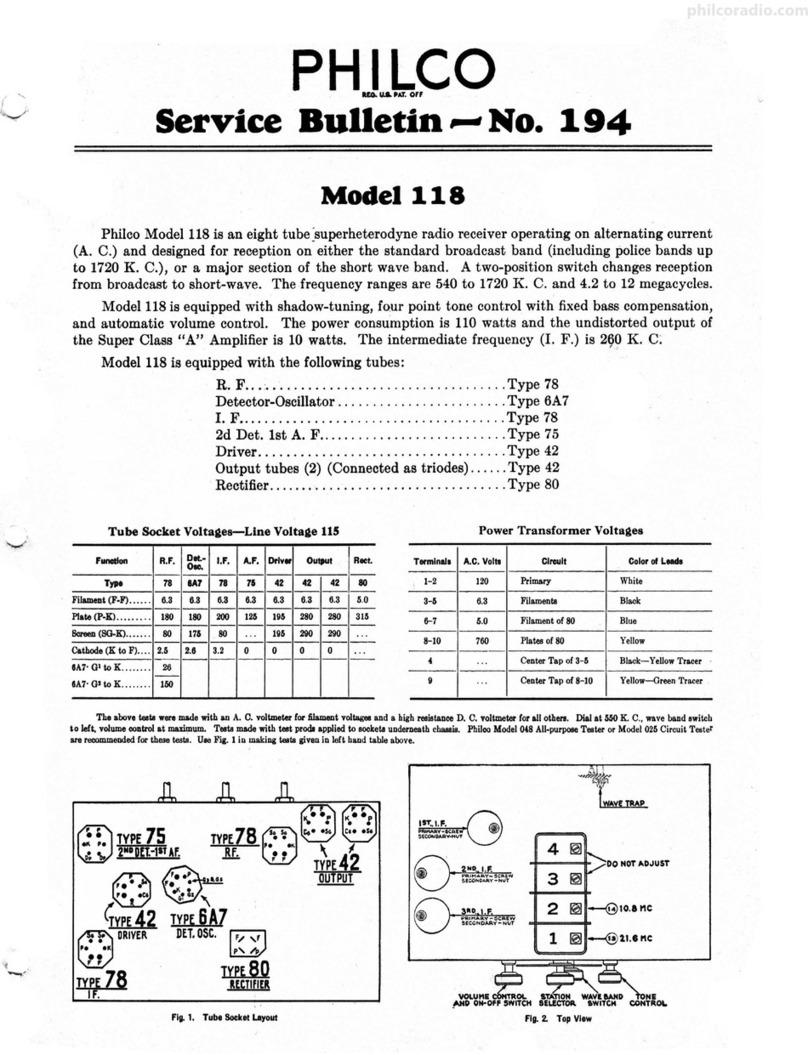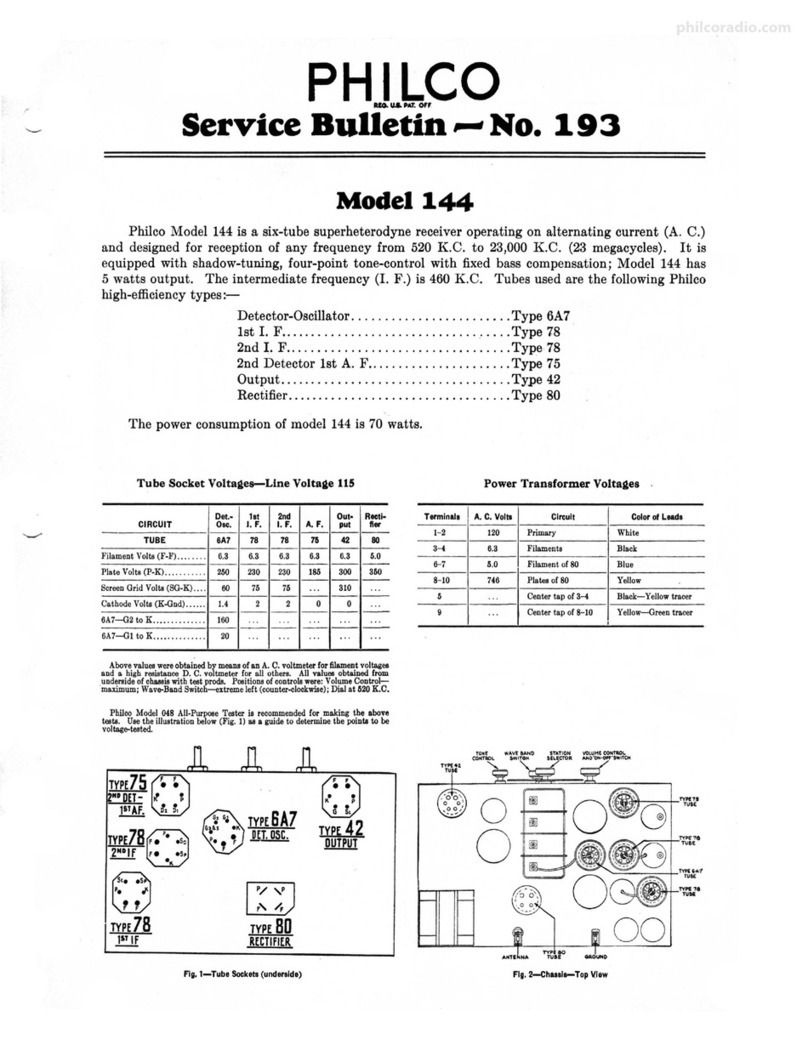
No. 294
Replacement Parts
Schem. Part
No. Desuiptlon No.
1 Antenna Transformer (Range 1) . 32-2575
2 Antenna Transformer (Range 2).. . 32-2576
3 Antenna Transformer (Range 3). 32-2573
4 Compensator, Antenna (Range 3) 3-1-6160
5 Condenser (.05µf tubular) ..... . . .-. .. .. 3M519
8 Condenser (.05µf-.05µf, Bakelite) . . . 3615DG
7 Resistor (51,000 0, ½ Watt). .... . 33-351339
8 Tuning Condense r Aasemhly .... 31-2075
9 Resistor (.100o, ½ Watt) .. . .. 33-110339
10 C'-ondenser(.05 µf, tubular) ... . . .. .... 30-4020
11 R. F. Transformer (Range I) .. . .. .... 32-2379
12 R. F. Transformer (Range 2) . 32-2382
13 R. F. Transformer (Range 3)..... . . . 32-2385
14 Condenser (5 µpf, Mica). . . . . . . .. . . 30-1097
J:8~::'f.'.::.~p~~i~-6
Ra~g-e3):: : : :: 31-6212
17 Condenser (.05 µf, Tubular) 3M519
18 Compensator Osc. (Range!) . .... . .... 31-6212
19 Osc. Tran.sformer (Range I) .. .. .. .. . . . 32--2373
20 Osc.Transformer (Range 2) . . .. 32--2383
21 Osc.Transform er (Range 3) . ... . . . . . . 32-2386
22 Compensator (Range 1 Series) . .. . . . . 31-6151
23 Condenser (1605 µpf, Mica) .. . . . . . . . . 31--6201
24 Resistor (2000, ½ Watt) . . ..... . . 33-170339
25 Condenser (.01 µf, Tubular).... 3M479
26 Condenser (IIOµµf, Mica) .. . 30-1031
27 Condenser (110 µpf, Mica).. 30-1031
28 Resistor (99,000 0, ½ Watt) 33-399339
29 Resistor (85 0, ½ Watt-) ... . 33-085339
30 Resistor (99,000 0, ½ Watt) 33-399339
31 Condenser (.3 µf, Bakelite) 6287DG
32 ·Compensator (2 Sections) .... . . . . . . . . 31--6211.
33 Condenser (250µµf, Mica) . .. . ... . . . . 30-1032
34 Resistor (32,000 0, ½ Watt). . 33-332339
35 Resistor (10,000 0, ½ Watt). . .. 33-310339
38 Condenser (4280 µµf, Mica) 31--6202
37 1st. I. F. Transform er.. .. . .. . . . 32--2604
38 2nd I. F. Transform er .. . . . . . 32--2362
39 Compensator ... . . . . . . . . . . . . 31-6203
40 Condenser (110 µµ[,Mi ca). . . . . . 30-1031
41 Resistor (1.0 Meg., ½ Watt) .. . 33--510339
42 Resistor (1.0 Meg., ½ Watt) 33--510339
43 Resistor (51,0000, ½ Watt).. . . . 33-351339
44 Resistor (330,000 0, ½ Watt)... 33--433339
45 Condenser (.Iµ[, Tubul ar)... . 3M455
46 Condenser (.05, Bakelite) . . . . . 3615SG
47 Resistor (1000 0, ½ Watt) . . . 33--210339
48 Resistor (330,000 0, ½ Watt) . . 33--433339
49 Resistor (2.0 Meg., ½ Watt) .. . 33-520339
50 Resistor l2.0 Meg., ½ Watt) .. 33-520339
51 Resistor (1.0 Meg.,½ Watt) . 33--510339
52 Resistor (1.0 Meg., ½ Watt). . . . . . . 33-510339
53 Condenser (llOµµf, Mica). . . . . . . .. 30-1031
54 Condenser (110 µµ[,Mi ca) . . . . . . . .. 30-1031
55 Resistor (490,0000, ½Watt) . ... . 33-449339
58 Resistor (490,0000, ½Watt) ........ . . 33--449339
57 Condenser (.15 µf- .15µ[, Bakelite) ... . 6287DG
58 Condenser (.006µ[, Tubular) .. . . .. 30-4445
59 Resistor (25,000 0, ½ Watt) .. . 33--325339
60 Condenser (.I µf, Tubular) ... .. 30-4455
61 Condenser (.01 ,.r,Tubular) ... . 30-4479
62 Condense r (.015 µf, Tubular) . .. 3M226
63 Resistor (51,000 0, ½ Watt). 33-351339
64 Volume Control 33-5233
85 Resistor (1.0 Meg., ½ Watt). 33-510339
88 Resistor (99,000 0, ½ Watt). . 33-399339
87 Resistor (240,000 0, ½ Watt) 33--424339
88 Condense r (.006 µ[,Tubu lar) .. 30-4467
89 Resistor (490,000!!, ½ Watt) . 33-449339
70 Conden.ser (.I µf, Tubular) .... . ...... 30-4499
71 Cond enser (.03 ,J-.03 µf, Bakelite) . 8318DU
72 Resistor (1.0 Meg.,½ Watt) .. . . .... .. 33-510339
73 Audio Shorting Switch (Parts (6) and
(16) Bulletin 273) .... : .. . . .. .. .
74 Tone Control. .. .. . . . . . . . . . . . . . . . . . . . 42-1268
75 Resistor (7,500 !l - 9,000 O Wire
Wound) . . ....... . . . . . . . . . . . . . 33-3320
78 Electrolytic Condenser (4 µf- 3 µf) .... . 30-2243
List
Price
$0.70
.70
.70
.30
.20
.40
.20
.20
.20
.40
1.00
1.20
.20
.20
1.60
.70
.70
.40
.40
.20
.20
.20
.20
.20
.20
.20
.40
.25
.20
.20
.50
2.20
3.30
.30
.20
.20
.20
.20
.20
.25
.35
.20
.20
.20
.20
.20
.20
.20
.20
.20
.20
.40
.20
.20
.25
.20
.20
.20
1.00
.20
.20
.20
.20
.20
.20
.40
.20
.75
.65
1.50
PHILCO SERVICE BULLETIN
Schem. Part
No. Deecriptlon No.
n Resistor (40,0000, 1 Watt). . . ..•... . 33-340439
78 Condenser (.03 µf, Tubular) 3M449
79 Condenser (.03 µ[,-Tubular) . .. . . . . . . . . 30-4449
80 Resistor (99,000!l, ½Watt) .·. . . ... . 33-399339
81 Resistor (490,000!l, ½ Watt).... .. 33--449339
82 Resistor (51,0000, ½ Watt) .. . . ... . 33-351339
83 Resistor (330,000 !l, ½ Watt)...... 33--433339
84 Resistor (40,0000, ½ Watt) . . . . . . . . 33-340339
85 Resistor (5,000 !l, ½ Watt) .. .. . ... . . . 33-250339
88 Resistor (3.10,0000, ½ Watt)...... 33--433339
87 Resistor (45,0000, ½ Watt)..... . 33-345339
88 Condenser (.03 µ[, Tubular)... . . . . . . 3M449
89 Resistor (99,000 !l, ½ Watt) .. ... ... 33-399339
90 Condenser (.006 µf, Tubular). .. . . . . 3M445
91 Condense r (.006 µ[, Tubular). . . . . . . . 3M445
92 Output Transformer ...... . . 32--7754
93 Cone&: Voice Coil Aasembly 36--3801
94 Resistor (88- 15-23 {l) . . 33--3321
95 Field &:Pot . Aasembly.. ... .. . ..... . . . 36--3941
96 Electro lytic Condenser. . .. . 30-2211
97 Electrolytic Condenser .... .. .. . . . . ... 30-2211
98 Condenser (.25 µf, Tubular)... . . . 3M446
99 Choke.. . . .. . ... . ........ . 32-7115
Lisi
Price
S0.20
.20
.20
.20
.20
.20
.20
.20
.20
.20
.20
.20
.20
.20
.20
1.50
1.40
.40
1.00
1.00
.25
I.SO
Fig. 3. Part Locations, Underside of Chassis
Schem.
No. Description Part
No.
100 Power Transformer (115V - 50-60
Cycles) . ... .... . ... . .... .. . ..... . 32--7869
PowerTran sformer( 115V,25-40cy~es) 32-7870
Power Transforme¥ (115/ 230V,
50-60 cyclesi .............. . . . .. . 32-7871
101 Condenser( .015µ[-.015µ[, Bakelite) .. 3793DG
102 A. F. C. Shorting Switch ... 45--2330
103 A. F. C. Switch 4Z-1.2"69
104 Flood Lamp Bulb .. 34-2064
105 Pilot Lamp . .... 34-2064
108 Wave Switch .. 42-1362
Automatic Tumng Mechanism (complete) 38-9145
Cable (Power) . . . . . . L-2183
Cable (Speaker) ... . 41-3329
Clip (R . F. Coils) .... .. . . . . . . 28--5002
Coupling (Tuning Condell3Cr) 31-1961
Coupling (Range Switch&: Mash) 38-8693
Knob (Range Switch) . . .. . . . . . . . 27--4326
Knob (Tuning} .. 27--4330
Knob (Vernier). .. . . . . 27--4331
Knob (Tone, Volume). . . 27-4332
Mtg. Rubher (Chassis) 27-4564
Mtg. Rubber (Rear of R. F. Unit) . .. . . 27-4197
Lisi
Price
S0.40
1.20
.09
.09
3.00
.40
.02
.80
.10
.10
.10
.10
.10
.08
Page 3
Schem. Part
No. Description No.
Mtg. Rubber (Front of R. F. Unit) .. .... .. 27-4581
Shield (R. F. Umt) .... . . . . . ... . . . _. . ... . . 38-8969
Shield (Tuhe) (Square) .. . .. . ............. 28-2726
Shield (Tuhe) (Round). .. . . . . . . . . . l!005
Shield Baoe (Square) . . . . . . . . . . . . . . . . . 28-2725
Socket Aasembly (Pilot Lamp} . 38-9100
Socket (6 prong) ...... . . . . . . . . . . . . . . . . . . 27-6086
Socket (7 prong} (6F6G tubes) . . .. .. . . . . . . 27--6057
Socket. (7 prong} .. ... .. . . .. . . . . ... . ..... 27-6087
Speaker H-32 .... ..... .. . . .. ..... .. ..... . 3tl-1299
Support (rearof R. F. Unit). . .. ... . . . . . . . . 38-8923
Terminal Panel (Antenna). . . .. . . . . . . . . . . . 38-8746
CABINETPARTS
B,ael Assembly ... . ...... . . . . ....... 38-8833
Cover (Back of cabinet) ... .. .. ..,. . . . . . . . . . 27-8!!64
AUTOMATICTUNINGMECHANISMPARTS
•Cover (handle). .. . .. .. . . . . . . . 28--5092
•Dial . . . . . . . . . . . . . . . . . . . . . . . . . . . . . . . 27-5358
Lisi
Price
S0.10
.10
.03
.11
.11
.11
.15
2.50
1.00
.50
•Dial Screen Holder ... . .. .... . . .. . ..... . . 31-2053 .75
•Escutcheon Aasembly (Station tahs)...... . 45--2472
•These Automatic Tuning Mechanism Parts differ from those
shownio Service Bulletin 273.
The Genuine PHILCO Replacement Parts listed above must be used to obtain the Accurate Balanced Performance built into this Philco Model






